106 results
Common Core SL.9-10.3 research

#Activism Research Project: Perfect for Social Justice/Informational Text Unit
Thanks to social media and trending hashtags, modern activism movements look much different than the activism of the past. This project is a great addition to any study of activism, social justice, social movements, informational text, or just as a stand-alone research project. It is crucially important we teach students how to research and understand the movements of their generation so they can actively participate in the dialogue that is taking place all around them. Understanding the current
Subjects:
Grades:
8th - 12th, Higher Education, Adult Education

Rhetorical Analysis: Ethos, Pathos, Logos, "We Choose to Go to the Moon," JFK
Teach your students to analyze ethos, pathos, logos, and various rhetorical devices by analyzing John F. Kennedy's famous Address at Rice University on the Nation's Space Effort, often referred to as his "We Choose to Go to the Moon" speech. Kennedy's famous speech is an important part of any unit of study, whether you're using it to teach U.S. history, Cold War history, the space race, rhetoric, or speech and debate. This multi-day worksheet is designed to help students understand the backgroun
Grades:
9th - 12th
Types:
CCSS:

Rhetorical Analysis: Ethos, Pathos, Logos, I Have a Dream Speech, MLK, CCSS
Teach your students to analyze ethos, pathos, logos, and various rhetorical devices by analyzing Martin Luther King Jr.'s (MLK's) famous speech, "I Have a Dream." Dr. King's famous "I Have a Dream" speech is an important part of any unit of study, whether you're using it to teach U.S. history, rhetoric, speech and debate, Civil Rights, or to celebrate MLK Day. This multi-day worksheet is designed to help students understand the background and context behind this famous speech, practice CCSS alig
Grades:
9th - 12th
Types:
CCSS:
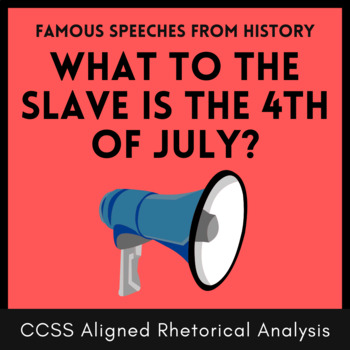
Rhetorical Analysis: What to the Slave is the Fourth of July, Frederick Douglass
Teach your students to analyze ethos, pathos, logos, and various rhetorical devices by analyzing Frederick Douglass' famous speech, "What to the Slave is the Fourth of July?" Douglass' famous speech is an important part of any unit of study, whether you're using it to teach U.S. history, the Civil War, the abolitionist movement, rhetoric, or speech and debate. This multi-day worksheet is designed to help students understand the background and context behind this famous speech, practice CCSS alig
Grades:
9th - 12th
Types:
CCSS:
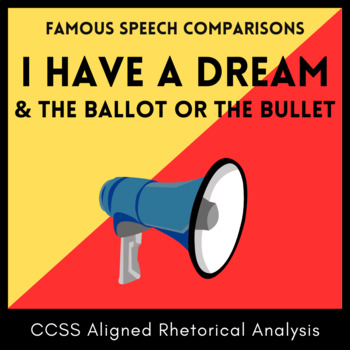
Speech Analysis Venn Diagram: I Have a Dream and The Ballot or the Bullet, CCSS
Help your students master their rhetorical analysis skills while analyzing and comparing two famous speeches from history: Martin Luther King Jr.'s "I Have a Dream" speech and Malcolm X's "The Ballot or the Bullet." The two rhetorical analysis worksheets are designed to help your students analyze the message and rhetoric of these two historical speeches, including their ethos, pathos, and logos. Additionally, a compare and contrast Venn diagram will engage your students with higher-level questio
Grades:
9th - 12th
Types:
CCSS:

Social Injustice Argumentative Research Project Pack
Argumentative writing prompt which allows students to select, research, and present a sound argument on a social injustice, or social issue taking place today. The project pack includes the student packet which is editable along with a .pdf version outlining appropriate time frames and steps for students. This activity also requires students to give rational as to why they would like to research their given topic and the steps they will take to do so. An excellent way of getting High School stud
Subjects:
Grades:
9th - 12th
Types:

Speech Analysis Venn Diagram: I Have a Dream and Gettysburg Address Analysis
Help your students master their rhetorical analysis skills while analyzing and comparing two famous speeches from history: Martin Luther King Jr.'s "I Have a Dream" speech and Abraham Lincoln's "Gettysburg Address." The two rhetorical analysis worksheets are designed to help your students analyze the message and rhetoric of these two historical speeches, including their ethos, pathos, and logos. Additionally, a compare and contrast Venn diagram will engage your students with higher-level questio
Grades:
9th - 12th
Types:
CCSS:
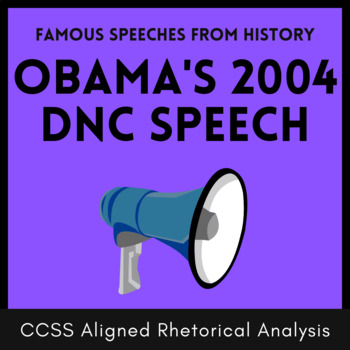
Rhetorical Analysis: Ethos, Pathos, Logos, 2004 DNC Keynote Speech, Barack Obama
Teach your students to analyze ethos, pathos, logos, and various rhetorical devices by analyzing Barack Obama's famous keynote address at the 2004 Democratic National Convention (DNC). Obama's famous speech is an important part of any unit of study, whether you're using it to teach U.S. history, presidential history, civics, government, rhetoric, or speech and debate. This multi-day worksheet is designed to help students understand the background and context behind this famous speech, practice C
Grades:
9th - 12th
Types:
CCSS:
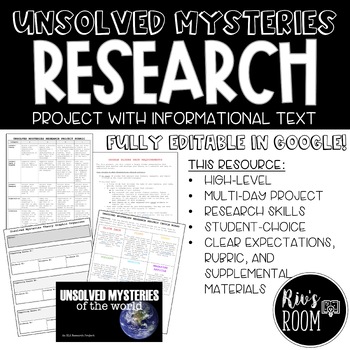
Unsolved Mysteries ELA Research Project - Editable in Google Drive!
ALL instructional materials in this Unsolved Mysteries ELA Research Project are COMPLETELY editable!This resource is perfect for middle or high school secondary ELA teachers who are looking to engage their students in a fun, high-level, creative project. This project is student-centered and allows kids to showcase their creativity! It's perfect for the middle of the year, or even the end of the year, because this high-interest project keeps kids focused and working!In this project, students will
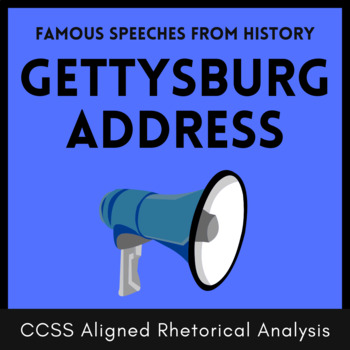
Rhetorical Analysis: Ethos, Pathos, Logos, Gettysburg Address, Abraham Lincoln
Teach your students to analyze ethos, pathos, logos, and various rhetorical devices by analyzing Abraham Lincoln's famous Gettysburg Address. Lincoln's famous Gettysburg Address is an important part of any unit of study, whether you're using it to teach U.S. history, the Civil War, rhetoric, or speech and debate. This multi-day worksheet is designed to help students understand the background and context behind this famous speech, practice CCSS aligned speaking and listening skills, and analyze (
Grades:
9th - 12th
Types:
CCSS:

Rhetorical Analysis: Ethos, Pathos, Logos, United Nations Speech, Malala, CCSS
Teach your students to analyze ethos, pathos, logos, and various rhetorical devices by analyzing Malala Yousafzai's famous speech to the United Nations. Malala's famous speech is an important part of any unit of study, whether you're using it to teach world history, women's history, rhetoric, or speech and debate. This multi-day worksheet is designed to help students understand the background and context behind this famous speech, practice CCSS aligned speaking and listening skills, and analyze
Grades:
9th - 12th
Types:
CCSS:
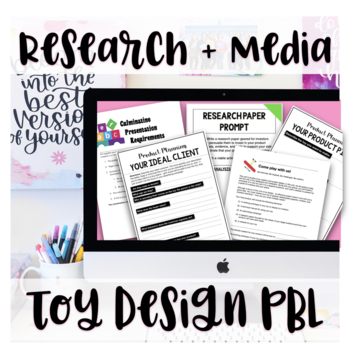
Advertising & Research Writing Project-Based (PBL) Toy Unit
Imagine a research paper unit that will involve your students in the act of toy creation, guide them through the research process, teach them to analyze both media and nonfiction, correctly cite sources, and market a toy. This doable, user-friendly unit will engage your students in toy creation: watch as your students consider the costs of toy creation and must research the ins and out of toy production; enjoy the thrill of students filming their own advertisements; inspire your students throug
Grades:
9th - 12th
Types:
Also included in: Project Based Learning (PBL) Growing Bundle for High School English
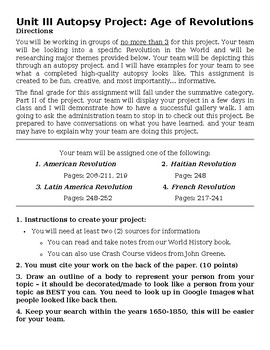
Autopsy: Age of Revolutions, Part I
The students will be looking into a specific Age of Revolution and will be researching major themes provided. The students will be depicting this through an autopsy project where the students will be drawing a person him/herself or someone from that time period with the themes surrounding the person. Students have autonomy on who they want to draw as long as it adds to the project. This assignment is created to be fun, creative, and most importantly… informative.
Grades:
4th - 12th, Higher Education, Adult Education
Also included in: Autopsy: Age of Revolutions

Feed by M.T. Anderson Bundle of Quizzes, Worksheets, Research Project, and Keys
This low-prep bundle covering Feed by M.T. Anderson contains all the formative and summative assessments teachers need to assess general reading comprehension, support the development of close reading analysis skills, facilitate student research on a range of relevant topics, and greatly reduce take-home lesson planning responsibilities. Included are four multiple choice quizzes; four short answer alternate quiz options; four close reading worksheets covering fifteen substantive novel passages;
Grades:
9th - 12th
Types:

Speech Analysis Venn Diagram: Malala's U.N. Speech and Nobel Prize Speech, CCSS
Help your students master their rhetorical analysis skills while analyzing and comparing two famous speeches from history: Malala Yousafzai's famous speech to the United Nations and her 2014 Nobel Prize acceptance speech. The two rhetorical analysis worksheets are designed to help your students analyze the message and rhetoric of these two historical speeches, including their ethos, pathos, and logos. Additionally, a compare and contrast Venn diagram will engage your students with higher-level q
Grades:
9th - 12th
Types:
CCSS:
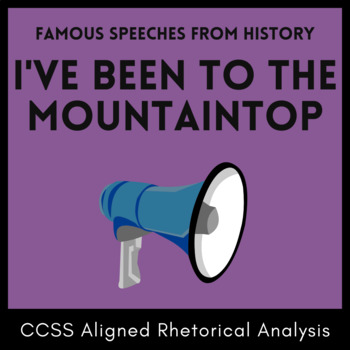
Rhetorical Analysis: Ethos, Pathos, Logos, I've Been to the Mountaintop, MLK
Teach your students to analyze ethos, pathos, logos, and various rhetorical devices by analyzing Martin Luther King Jr.'s (MLK's) famous final speech, "I've Been to the Mountaintop." Also known as the "Mountaintop Speech," Dr. King's final speech is an important part of any unit of study, whether you're using it to teach U.S. history, rhetoric, speech and debate, Civil Rights, or for MLK Day. This multi-day worksheet is designed to help students understand the background and context behind this
Grades:
9th - 12th
Types:
CCSS:
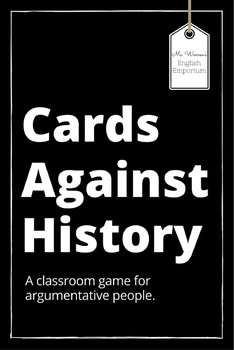
Cards Against History: A classroom game for argumentative people.
This game is, hands down, my favorite addition to my classroom. What started as a fun, one day review quickly developed into a week long research task that got my students asking obscure questions, making interesting connections, and building historical context for their writing.
And that is why this "game" became so valuable. Teaching students how to build context in their writing has always been (and will probably always be) a challenge. Traditionally, those with richer life experiences have
Grades:
9th - 12th
CCSS:
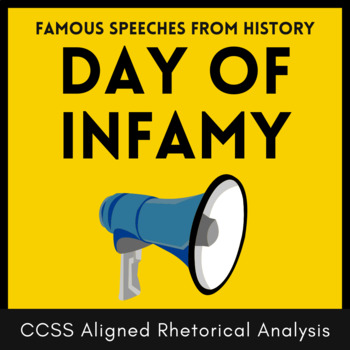
Rhetorical Analysis: Ethos, Pathos, Logos, "Day of Infamy," Pearl Harbor, FDR
Teach your students to analyze ethos, pathos, logos, and various rhetorical devices by analyzing Franklin D. Roosevelt's (FDR) famous "Day of Infamy" speech, often referred to as his Pearl Harbor speech. Roosevelt's famous speech is an important part of any unit of study, whether you're using it to teach U.S. history, WWII, rhetoric, or speech and debate. This multi-day worksheet is designed to help students understand the background and context behind this famous speech, practice CCSS aligned s
Grades:
9th - 12th
Types:
CCSS:
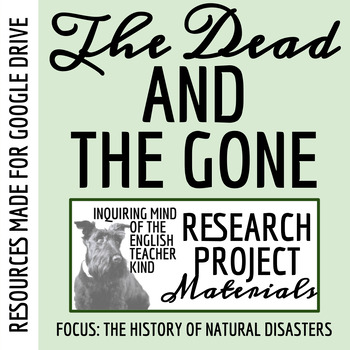
The Dead and the Gone by Susan Beth Pfeffer Research Project for Google Drive
Facilitate the process of investigating relevant topics, documenting information gathered, and delivering formal speeches with this low-prep, standards-based research project to complement Susan Beth Pfeffer's dystopian novel The Dead and the Gone, the sequel to Life As We Knew It. The focus of the project is natural and human-influenced disasters, covering twenty topics including the San Francisco earthquake of 1906, the flu pandemic of 1918, the tri-state tornado outbreak of 1925, the Fukushi
Subjects:
Grades:
6th - 12th
CCSS:

Revolutionary Bundle: Founding Figures, American Revolutionary Era, Literature
Teach students about the famous speeches, literature, and poetry of the founding era with this founding figures, American revolutionary era literature bundle. Everything your students need to analyze documents and speeches from George Washington, Benjamin Franklin, Phillis Wheatley, and Patrick Henry is included in this two-week revolutionary era bundle. For example, students can learn to analyze the ethos, pathos, and logos of Henry's "Give Me Liberty, or Give Me Death!" speech and compare its
Grades:
9th - 12th
Types:
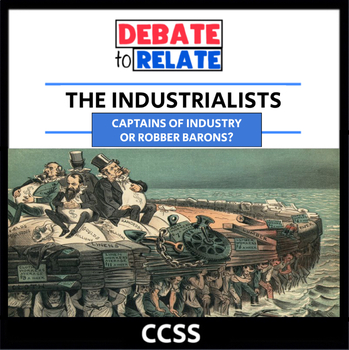
Captains of Industry or Robber Barons? - Industrialists Debate - CCSS
This is a set of lesson materials that culminates in a class debate about the legacy of the major industrialists such as Rockefeller, Carnegie, Vanderbilt, etc. Students will: Learn about their careers during the Industrial Revolution, analyze different viewpoints, be assigned a position to take, collaborate within teams, prepare main arguments, peer review each other's reasoning, and will participate in an academic debate that is guided by moderator questions (included). The objective is to hel
Grades:
8th - 12th
Types:
Also included in: U.S. History Debates Bundle - CCSS

Rhetorical Analysis: Ethos, Pathos, Logos, Speech to the Troops at Tilbury, CCSS
Teach your students to analyze ethos, pathos, logos, and various rhetorical devices by analyzing Queen Elizabeth I's famous speech to the troops at Tilbury, 1588. Queen Elizabeth I's famous speech is an important part of any unit of study, whether you're using it to teach British history, women's history, rhetoric, or speech and debate. This multi-day worksheet is designed to help students understand the background and context behind this famous speech, practice CCSS aligned speaking and listeni
Grades:
9th - 12th
Types:
CCSS:

Autopsy: Totalitarianism State, Part 1
The students will be looking into a specific Totalitarianism State before World War II and will be researching major themes provided. The students will be depicting this through an autopsy project where the students will be drawing a person him/herself or someone from that time period with the themes surrounding the person. Students have autonomy on who they want to draw as long as it adds to the project. This assignment is created to be fun, creative, and most importantly… informative.
Grades:
PreK - 12th, Higher Education, Adult Education
CCSS:
Also included in: Autopsy: Totalitarianism State (1919-1939)
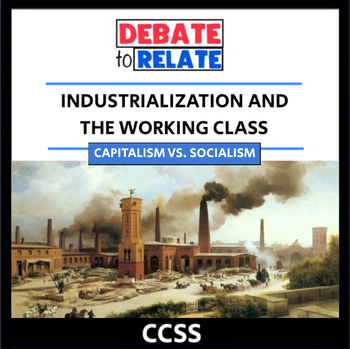
Capitalism vs. Socialism Debate - Industrialization and the Working Class - CCSS
This is a set of lesson materials that culminates in a class debate about the emerging ideas of capitalism and socialism during the Industrial Age. Students will: Learn about different perspectives from thinkers such as Adam Smith and Karl Marx, analyze different viewpoints, be assigned a position to take, collaborate within teams, prepare main arguments, peer review each other's reasoning, and will participate in an academic debate that is guided by moderator questions (included). The objective
Subjects:
Grades:
8th - 12th
Types:
Also included in: Industrial Revolution Debates - PAIR PACK - CCSS
Showing 1-24 of 106 results

